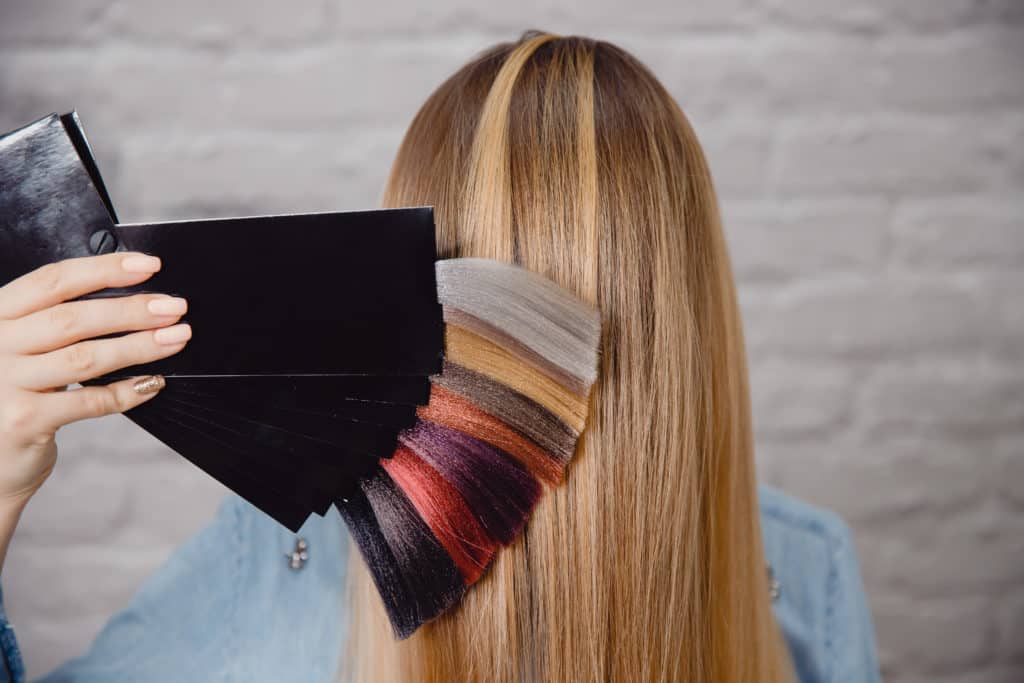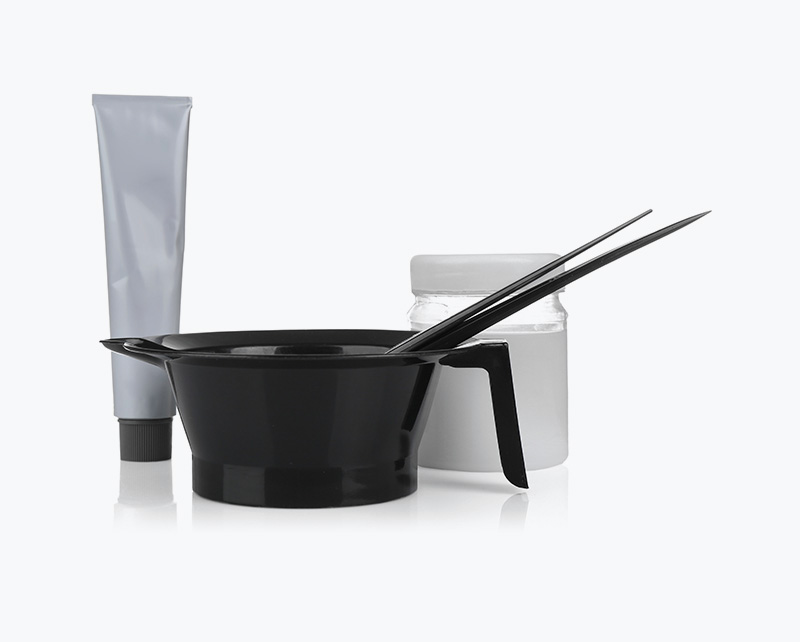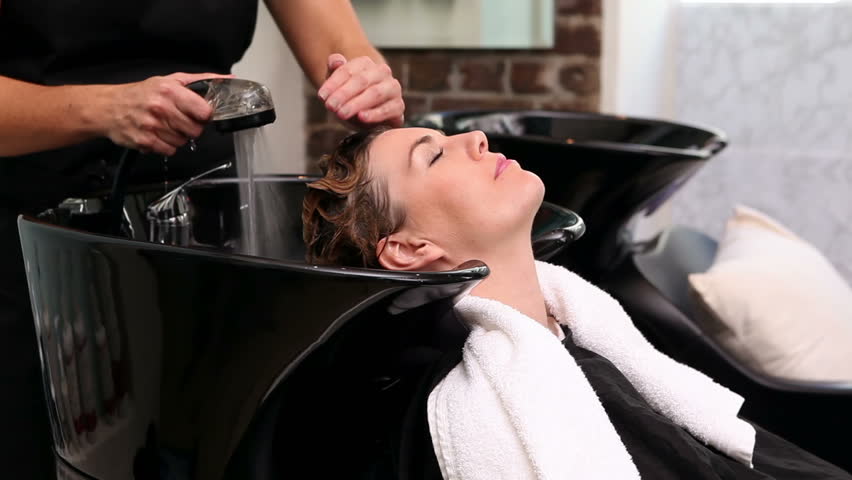
Get Salon-Worthy Hair Color at Home: Our Top Tips for DIY Dyeing Success
Healthy, well-conditioned hair is essential for achieving vibrant, long-lasting color results. Before coloring, take steps to ensure your hair is in optimal condition to minimize damage and maximize color retention. Use a deep conditioning treatment or hair mask to nourish and strengthen strands, paying special attention to porous or compromised areas. Trim away any split ends, as these can lead to uneven color absorption and fading.
Avoid washing your hair immediately before coloring, as the natural oils help protect your scalp during the coloring process. However, ensure your hair is free of product buildup by using a clarifying shampoo a few days prior. This will allow for better color penetration and even distribution. Taking the time to properly prepare your hair can make a significant difference in the overall outcome and longevity of your hair color.
Understanding Your Hair Type and Texture
Hair comes in a wide variety of types and textures, each with its own unique characteristics and coloring needs. Understanding your hair’s specific type and texture is crucial for achieving optimal hair color results. Fine, thin hair may require a gentler coloring process and shorter processing times to prevent damage, while coarse, thick hair may need more robust color formulas and longer processing times for even saturation.
Straight hair tends to take color more evenly, while curly or wavy hair may require special techniques to ensure the color penetrates evenly throughout the hair shaft. Highly porous hair may absorb color quickly, leading to uneven or overly intense results, while resistant hair may require more potent color formulas or longer processing times.
Customizing your color application technique is essential for addressing your hair’s unique needs. For example, those with curly or coily hair may benefit from applying color in sections or using a coloring brush to ensure even distribution. Those with fine or damaged hair may need to use a lower volume developer or add a bond-protecting additive to the color formula to minimize damage.
By understanding your hair type and texture, you can tailor your coloring approach, from product selection to application techniques, to achieve your desired shade while maintaining the health and integrity of your strands.
Selecting the Right Hair Color
One of the most important factors in achieving your desired hair color is selecting the right shade. This involves considering your natural hair color, skin tone, eye color, and the overall look you want to achieve. Choosing a complementary shade that enhances your features can make a significant difference in the result.
When it comes to skin tone, it’s essential to determine whether you have cool or warm undertones. Cool skin tones tend to have hints of blue or pink, while warm skin tones lean towards yellow or golden hues. Cooler hair colors, such as ash blondes and deep brunettes, often complement cool skin tones better, while warmer shades like golden blondes and rich auburn hues flatter warm skin tones.
Eye color is another factor to consider when selecting a hair color. Generally, cooler eye colors like blue or green pair well with cooler hair shades, while warmer eye colors like brown or hazel complement warmer hair tones. However, this is not a strict rule, and personal preference plays a significant role.
Additionally, consider the desired result you want to achieve. Do you want a subtle, natural-looking change or a bold, dramatic transformation? Opt for shades that are within a few levels of your natural hair color for a more natural look or go for a more drastic change with a significantly lighter or darker shade.
Avoiding clashing tones is also crucial. For example, if you have cool undertones, steer clear of overly warm, brassy shades that can clash with your skin tone and make you look washed out. Similarly, if you have warm undertones, cool, ashy tones may not be the most flattering choice.
Remember, hair color is a personal choice, and the most important factor is choosing a shade that makes you feel confident and beautiful. Don’t be afraid to experiment and try new shades, but always consider your natural features and desired outcome to achieve the best results.
Preparing the Hair Color Mix
Proper preparation of the hair color mixture is crucial for achieving even, long-lasting results. Always follow the manufacturer’s instructions carefully, as different brands and formulas may have specific mixing ratios or techniques. Typically, you’ll need to combine the color cream or gel with a developer in the recommended proportions.
When mixing, use a tinting brush or whisk to blend the components thoroughly until you achieve a smooth, consistent texture without any streaks or unmixed pockets. Ensure that you’ve incorporated all the product from the sides and bottom of the bowl. Mixing thoroughly helps prevent uneven color distribution and patchy results.
Once mixed, work quickly to apply the color evenly from roots to ends. Consistent application is key to avoiding hot roots, which occur when the color processes faster at the scalp area due to body heat. To prevent this, some colorists recommend applying the mixture to the regrowth area last, after saturating the mid-lengths and ends first.
Remember, timing is everything when it comes to hair color processing. Follow the recommended processing time precisely, and avoid letting the color sit for too long, as this can lead to over-processing and damage. With proper preparation and application, you’ll be well on your way to achieving your desired hair color results.
Application Techniques
Proper application is key to achieving even, long-lasting hair color results. Start by sectioning your hair into manageable quadrants using clips or foil. This ensures you don’t miss any areas and can work methodically.
Always apply the color mixture to the regrowth area or roots first. Use a tinting brush or applicator bottle to saturate the roots thoroughly, taking care to avoid overlapping onto previously colored lengths. Once the roots are covered, work the color down through the mid-lengths and ends, again avoiding overlap.
Pay special attention to the ends, as they tend to be more porous and may require additional color saturation. Gently massage the color into the ends using your fingers or a tinting brush. For maximum coverage and vibrancy, ensure the ends are fully coated.
Timing is crucial during the application process. Work quickly but precisely to prevent the color from drying out or over-processing in certain areas. Set a timer for the recommended processing time, and avoid leaving the color on for too long, as this can lead to unwanted warmth or damage.
Processing Time and Heat
Adhering to the recommended processing time is crucial for achieving your desired hair color results. Over-processing, or leaving the color on for too long, can lead to dry, brittle, and damaged hair. It can also cause the color to become dull or develop an undesired brassy tone. On the other hand, under-processing may result in an uneven or incomplete color application.
Heat plays a vital role in ensuring proper color penetration and even distribution throughout the hair strands. Applying gentle heat, such as using a hair dryer on a low setting or sitting under a hooded dryer, can help open up the hair cuticles and allow the color to penetrate more deeply. However, excessive heat can cause the color to develop too quickly, leading to over-processing and potential damage.
It’s essential to follow the manufacturer’s instructions regarding processing time and heat application. If you’re unsure about the recommended time or temperature, consult with a professional colorist. Over-processing can be detrimental to your hair’s health and may require corrective measures or even a haircut to remove the damaged sections.
Rinsing and Aftercare
Proper rinsing and aftercare are crucial for achieving long-lasting, vibrant hair color results. Thorough rinsing ensures that all traces of the hair color mixture are removed, preventing unwanted staining or further processing. Use cool or lukewarm water when rinsing, as hot water can cause the cuticle to open, leading to premature color fading.
After rinsing, it’s essential to deep condition your hair. The coloring process can be drying and damaging, so a nourishing deep conditioner will help replenish moisture and strengthen the hair strands. Look for conditioners specifically formulated for color-treated hair, as they often contain ingredients that help seal in the color pigments.
To protect your newly colored hair from fading, consider using a color-protecting shampoo and conditioner. These products are designed to prolong the vibrancy of your hair color by preventing premature oxidation and fading caused by environmental factors, such as UV rays and pollution. Additionally, limit heat styling and use a heat protectant, when necessary, as excessive heat can cause color to fade more quickly.
Correcting Color Mishaps
Even with careful preparation and application, hair color mishaps can still occur. Don’t panic! There are solutions to fix common issues like color that turns out too dark, too light, brassy, uneven, or bleeds onto the skin.
Too Dark: If your hair color turned out darker than desired, you can try using a clarifying or stripping shampoo to gradually fade the color. Avoid over-shampooing, as it can dry out your hair. Another option is to use a color remover product, which can lift the artificial pigment from your hair.
Too Light: If the color is too light or ashy, you can apply a toning gloss or semi-permanent color to adjust the tone and add warmth. Consult with a professional stylist to determine the right shade to neutralize unwanted tones.
Brassy Tones: Brassy or orange tones can occur when the hair’s undertones clash with the color. Use a toning shampoo or purple-tinted toner to counteract brassiness and cool down the unwanted warm tones.
Uneven Color: Uneven color can result from improper application or hair porosity issues. Try using a color-depositing conditioner or gloss to even out the tones. In severe cases, you may need to re-color the uneven sections or seek professional help.
Color Bleeding: If the color bleeds onto your skin or hairline, act quickly. Use a cotton ball soaked in a mixture of equal parts water and baking soda to gently scrub the stained areas. Alternatively, you can use a clarifying shampoo or a dedicated color remover product on the affected skin.
Remember, correcting color mishaps may require patience and multiple attempts. If the issue persists or worsens, it’s best to consult a professional colorist for expert guidance and solutions.
Maintaining Color Vibrancy
Once you’ve achieved your desired hair color, it’s essential to take steps to maintain its vibrancy and prevent premature fading. Color-treated hair requires extra care and attention to keep it looking its best. Here are some tips for maintaining your hair color’s radiance:
Use Color-Protecting Products: Invest in shampoos, conditioners, and styling products specifically formulated for color-treated hair. These products are designed to seal in color, prevent fading, and protect your hair from environmental aggressors that can strip away the pigment.
Avoid Harsh Chemicals: Steer clear of products containing harsh chemicals like sulfates, parabens, and alcohol, as they can strip your hair of its natural oils and cause your color to fade faster. Opt for gentle, sulfate-free formulas that won’t compromise your hair’s integrity or color.
Limit Heat Styling: Excessive heat from blow dryers, flat irons, and curling irons can cause your hair color to fade and become brassy. Try to minimize heat styling and always use a heat protectant product when you do style with heat. Allow your hair to air dry whenever possible.
Get Regular Touch-Ups: Depending on your hair’s porosity and the type of color you’ve used, you’ll need to schedule touch-ups every 4-8 weeks to refresh your roots and prevent regrowth from becoming too noticeable. Regular touch-ups will help your color look fresh and vibrant.
Protect from Sun Exposure: UV rays from the sun can cause your hair color to fade and become brassy or dull. Wear a hat or use a UV-protecting hair product when spending extended periods in the sun. This will help preserve your color and prevent premature fading.
By following these tips and using the right products, you can enjoy your beautiful hair color for longer and maintain its vibrancy between salon visits.
Professional vs. At-Home Coloring
The choice between professional hair coloring and at-home coloring is a significant one, with each option offering its own set of advantages and disadvantages. Professional hair coloring, typically done at a salon, provides a higher level of expertise, customization, and precision. Trained colorists have the knowledge and experience to assess your hair type, condition, and desired outcome, and can recommend the most suitable color and application technique. They also have access to professional-grade products that are often more potent and longer-lasting than those available for home use.
One of the primary advantages of professional coloring is the ability to achieve complex, multi-dimensional results that can be challenging to replicate at home. Colorists can expertly blend and place highlights, lowlights, and other techniques to create a natural, blended look. Additionally, they can correct previous color mishaps or undertones that may be difficult to address with at-home kits.
However, professional coloring services can be significantly more expensive than at-home options, with prices varying based on the salon, location, and the complexity of the service. Touch-ups and root maintenance may also be required more frequently, adding to the overall cost.
At-home hair coloring, on the other hand, offers convenience and affordability. With a wide range of box dyes and semi-permanent colors available at drugstores and beauty supply stores, you can achieve a new look without the need for an appointment or salon visit. At-home coloring is generally less expensive than professional services, making it a more budget-friendly option for those who want to change their hair color frequently or maintain their desired shade.
However, at-home coloring also comes with its own set of challenges. Without professional guidance, it can be difficult to select the right shade and formula for your hair type and desired outcome. Improper application or processing time can lead to uneven coverage, brassiness, or damage to the hair. Additionally, at-home kits may not provide the same level of longevity or vibrancy as professional products, requiring more frequent touch-ups.
Ultimately, the decision between professional and at-home coloring depends on your budget, desired results, and comfort level with the application process. For those seeking a dramatic change, correcting previous color issues, or achieving a complex, multi-dimensional look, professional coloring may be the better choice. However, for those seeking a subtle change or touch-up, or those comfortable with the application process, at-home coloring can be a convenient and cost-effective option.
Call Matin Beauty Salon today and request a professional hair CARING in Thornhill.
Give it a try at Matin Beauty and see what everyone’s fussing about.



